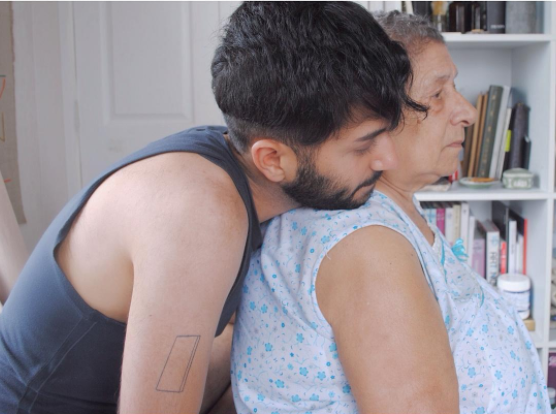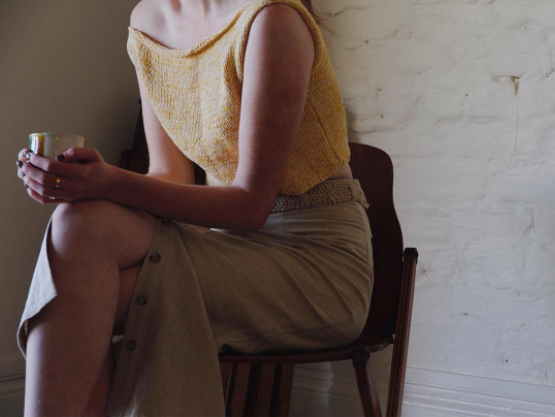
I discovered Areez Katki’s work through Instagram. It was the quiet refinement and delicacy of his photos, and work, that caught my eye. In a world where fashion has become so instant – to the point where even haute couture is dipping its toe in see-now, buy-now – it was a breath of fresh air to find someone really and truly devoted to their craft, down to the very last stitch. I became so enamored of his work that I reached out for an interview. Mr. Katki is as charming and thoughtful in his emails, as he is with his work and there was an unfamiliar level of consideration in each sentence he wrote me. Mr. Katiki currently resides in New Zealand and his work is carried at Miss Crabb, a boutique in Auckland, and Simon james Concept Store, also based in Auckland but with an online store. Below is our interview in its entirety and after reading be sure to check out his work through the links at the end of the interview.
Amelia Levin-Sheffield: I understand that your grandmother taught you how to knit. Can you tell me how this came about? How old were you? what was the experience like? Do you still knit with your grandmother or think about her as you knit and/or design?
Areez Katki: I was around seven years old when Gran started to teach me how to knit. The experience, now that I look back at it, was that of a son being introduced to something that was essentially in the matriarchal domain of life skills. I entered it then and have never left since. Levin-Sheffield: You seem to have done a lot of traveling. When I was scrolling through your instagram and blog, I saw photos from Switzerland, Portugal, Turkey, India, Morocco, Budapest, Spain, France, Lebanon and of course New Zealand, where you currently live. What drives you to explore new places and what impact does traveling have on your work? Katki: I think that I’m drawn to the prospect of exploring and learning through travel. When I lived in Spain, Turkey or France we went away to different towns almost every weekend. It gave me an engagement with the research of textiles, cuisine, architecture, art and craft that I’ve always been drawn to. Also, having majored in Art History it seemed like a wonderful way to extend my education beyond the books & lecture halls. I had the privilege to observe & learn about the identities of the various cultures that I was immersed in. The only impact it has on my work is a positive one – I could take my knitting needles with me anywhere and let culture supply me with yarn fibres. Levin-Sheffield: There’s a stigma of knitting as being only a woman’s craft, how have gender norms, played into your own career, if at all?
Katki: Firstly, I find that stigma abhorrent. It affects me as a practitioner who tries to remain on the outskirts of fashion, because as we all know, that word implies change & constant flux in style. Craft in general has had this terrible reputation of being a ‘lowered’ field – this association with knitting being a ‘woman’s craft’ is a result of centuries of patriarchal oppression. As I said earlier, I am a product of the matriarchy; a feminist who is proudly supportive of all work that embodies sensitivity & thoughtfulness, regardless of its practitioner’s gender or cultural identity.
Levin-Sheffield: Can you please describe the process, from start to finish, of creating one piece?
Katki: The processes vary. Some of the simplest formulae take many trials and samples to produce as a ‘final’ piece. And some of the most detailed pieces I’ve made have been seamless in terms of how they were produced. It all depends on mood, creative impulse, body temperature, energy levels and also greatly on time. Quantifying the worth in dedicating my time to one particular thing is often the hardest part.
Levin-Sheffield: Do you imagine the person–the client you are designing your clothes for — or do you design what you like and hope someone will like it too? Do you have any design collaborators or muses?

Katki: I often like to think that likeminded individuals will gravitate toward my work. Not in a narcissistic way, because physically they might be very different. But rather those with a similar sensibility toward aesthetics and a slow, thoughtfully considered lifestyle. My design muses are women & men who have no desire to be known, but embody a strong sense of self.
Levin-Sheffield: You’ve written on your website that your clothes have a “modern practicality.” What is your definition of “modern practicality”?
Katki: Firstly that practicality is an economic one. With being carefully hand crafted, this justifies their worth through longevity. The garments are usually simple, easy to wear and do not adhere to any one genre of ‘style.’ I like how knitwear is often timeless, when treated with respect. This way, the wearer may have years of joy with such garments in their wardrobe.
Levin-Sheffield: What was the inspiration for your latest collection, Peninsula II?
Katki: Travel, exploration and life on lands that are flanked by vast bodies of water. Peninsula (from Summer 2015) was an ode to my life around the Iberian Peninsula. This new summer collection being titled ‘Peninsula II’ is a continuation of that, moving further east to regions of Asia Minor and India.
Levin-Sheffield: Can you talk about the evolution of your work? A lot of your earlier designs seem to be a bit louder, and chunkier, more colorful, while your last two collections seem a bit more refined and delicate.
Katki: I think that this evolution has been quite organic. It may have to do with how my sensibilities and influences developed while I was travelling? I’ve never been one to evolve rapidly, because my eye isn’t on the zeitgeist. Any change that occurs in my work is a natural circumstance of personal growth.
Levin-Sheffield: Do you already have your next collection planned out, and if so can you share some of your thoughts about it? What other projects do you have coming up next?

Katki: I do. Aesthetically, it involves a lot of colour variations and attention to new necklines. The fibres that I’ll be using are homespun and batchdyed, from possum and various sheep breeds in New Zealand. (We must remember that possums are a pest in New Zealand. It has taken me years to come to terms with respectfully consuming their fibres; a byproduct of culling that is actually an act of sustainable responsibility toward our ecosystem).
Levin-Sheffield: Lastly, what advice do you have for budding craftsmen and craftswomen? What lessons have you learned about starting a business and specifically a fashion line?
Katki: I would say that we must all know what we want to produce and come to terms with the impact of our products on consumer lives. Craft has had a long history of tradition attached to its name and part of why it is still alive is because it stems from everyday human needs. A sweater, a mug, a table; what they all have in common is that we make them for specific daily functions. If these functions were considered before being given their stylistic flourishes, the world would be a cleaner, less consumer-driven place.





